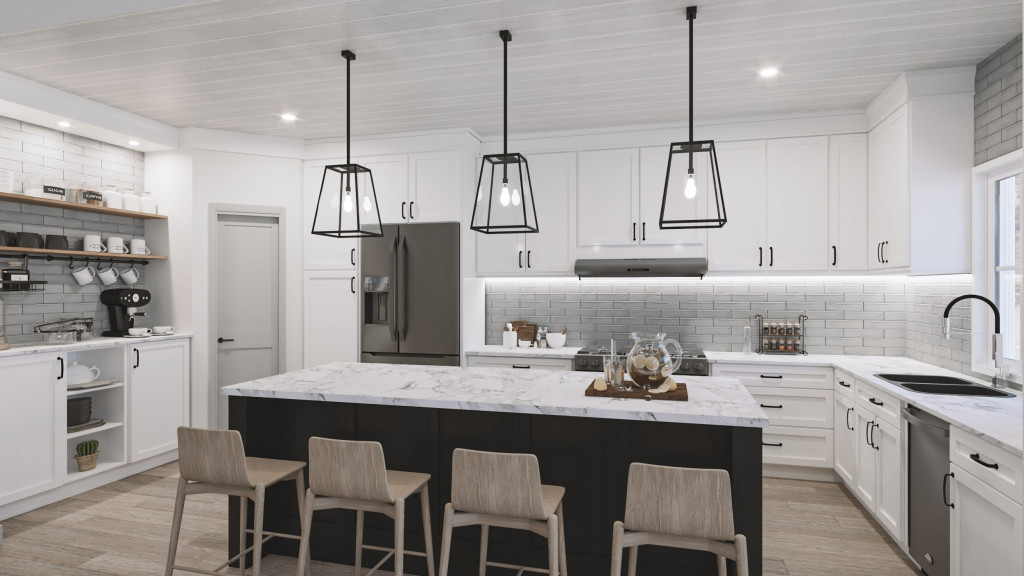
Accessory Dwelling Units (ADUs) are becoming an increasingly popular choice for homeowners looking to add living space or rental income to their property. While some may assume that building an ADU is more cost-effective than constructing a brand-new property, it’s important to take into account various factors that can impact the overall cost of both options.
However, there’s a different set of costs associated with building an ADU compared to a new property, as well as the potential benefits and drawbacks of each option. Whether you’re a homeowner considering an ADU or a new build, understanding the cost implications of each choice can help you make an informed decision that meets your needs and budget.
What is an ADU (Accessory Dwelling Unit)?
An Accessory Dwelling Unit (ADU) is a secondary residential unit that can be built on the same property as a primary residence. Also known as a granny flat, backyard cottage, or mother-in-law suite, an ADU is typically smaller than the main house and has its own entrance, kitchen, bathroom, and living space. ADUs are gaining popularity as they provide homeowners with additional living space and rental income, while also helping to address the shortage of affordable housing in many cities.
ADUs come in a variety of styles and configurations, from detached units to those attached to the main house. They can be used as a rental unit, a guest house, a home office, or as a separate living space for aging parents or adult children. ADUs can be designed to complement the architecture of the main house or to stand out as a distinct and modern addition to the property.
How much does an ADU cost to build?
ADUs are increasingly popular among homeowners who want to increase the value of their property, provide extra space for family members, or generate rental income. However, the cost of building an ADU varies depending on the location.
In the United States, the cost of building an ADU can range from $175,000 to $400,000, or more. The cost depends on a variety of factors, such as the size of the unit, the type of construction, and the location. For example, building an ADU in a high-cost city like San Francisco or New York City will be significantly more expensive than building in a more affordable location like Texas or the Midwest.
The cost of building an ADU can also vary based on the type of unit. A detached ADU, which is a separate structure from the primary home, will generally be more expensive than an attached ADU, which is connected to the primary home. Additionally, a custom-designed ADU will be more expensive than a prefabricated or modular unit.
When considering the cost of building an ADU, it is important to factor in additional expenses such as permits, site preparation, and utilities. The cost of utilities can vary depending on the location and the type of ADU. Some homeowners may choose to install solar panels or other energy-efficient features to help offset these costs over time.
How much does a new property cost to build?
Building a new property can be an expensive endeavor. The cost of constructing a new property depends on various factors such as the location, the size, the design, and the materials used.
Building a new property can be a significant investment, and the cost will depend on several factors. The location, size, design, and finishes all contribute to the final cost. According to HomeAdvisor, the average cost of building a new home in the United States ranges from $150,000 to $450,000, with a median cost of around $320,000. However, this again can vary widely based on location, with homes in high-cost areas like California and New York being significantly more expensive.
In addition, the cost of labor and materials can also vary depending on the region, with some areas having higher construction costs due to local regulations and building codes. Other factors that can affect the cost of a new home include site preparation, permits, and the complexity of the design.
What impacts the cost of building
When considering building an Accessory Dwelling Unit (ADU), it’s essential to understand the factors that contribute to the cost. Here are some significant factors that can impact the final cost of building an ADU:
- Size and layout: The size and layout of your ADU will directly impact the cost of construction. Larger units require more materials and labor, which can drive up the cost.
- Design and style: ADUs come in many shapes and styles. A more complex design can increase the cost of construction as it will require more time and labor.
- Location: The cost of construction can vary depending on the location of the property. If you’re building an ADU in a high-cost area, expect to pay more for materials and labor.
- Foundation: The type of foundation you choose for your ADU can also impact the cost. A slab foundation is generally less expensive than a full basement or crawlspace.
- Plumbing and electrical: Plumbing and electrical costs can vary depending on the type of fixtures and appliances you want to install.
- Permits and fees: Building an ADU requires various permits and fees, including construction permits, inspection fees, and impact fees.
- Labor costs: The cost of labor can vary significantly depending on the location and complexity of the project. It’s essential to work with a reputable contractor who can provide an accurate estimate of labor costs.
By understanding these factors, you can make informed decisions about the cost of building an ADU. Working with a reputable builder who specializes in ADUs can help you manage costs and ensure that your project stays within your budget.
ADUs Vs house extension
When it comes to expanding your living space, you have several options available, including building an ADU or extending your house. Ultimately, the choice between building an ADU or extending your home will depend on your personal preferences and overall goals.
Building an ADU provides an opportunity to create a completely separate living space with its own entrance and amenities. This can be particularly beneficial if you’re looking to generate rental income, accommodate guests or family members, or simply have more privacy.
On the other hand, extending your home can provide a seamless expansion of your existing living space. This option may be more ideal if you’re looking to increase the size of your home while maintaining the same overall layout and aesthetic. Extending your home can also be a better option if you have specific design or architectural preferences that you’d like to incorporate into your expanded space.
Regarding costs, ADUs, and home extensions are priced in a similar range. The average cost of building a house extension in America ranges from $20,000 to $75,000 or more, depending on the size and complexity of the project. This is significantly higher than the cost of building an ADU, which can range from $50,000 to $200,000 or more, depending on location, size, and amenities.
Should you build an ADU or new property?
If you’re stuck in deciding between building an ADU or a new property, don’t hesitate to contact the G.J. Gardner Homes team. Our experienced and knowledgeable team can guide you through the process, helping you make an informed decision that best suits your needs and preferences. With our expertise and commitment to quality, we are dedicated to bringing your dream home to life.


















